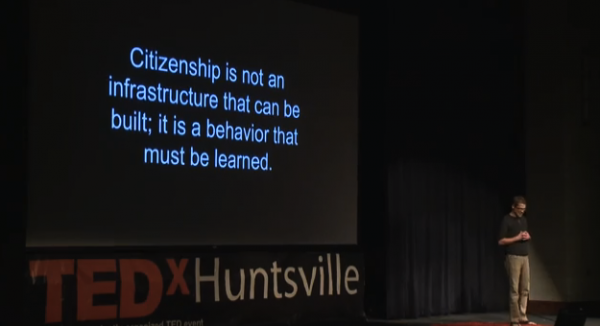We gave our son a smart phone for his birthday. My wife has been concerned for a number of reasons- the potential costs (she envisions enormous bills because of texting and downloading games), that the phone will be lost or stolen, that our son will lose his love for hardcopy books (he’s a voracious reader) and that he won’t “go outside to play” anymore but will just play games on his phone all of the time. She knows that there are ways to prevent or at least manage these worst case scenarios – some controlled by technology fixes and some by just good old-fashioned parenting. However, I think her biggest fear is the potential loss of innocence due to the vast amount of information (the good, the bad and the ugly) that is now at his fingertips.
This is the fear of a lot of parents when schools implement 1:1 initiatives or Bring Your Own Device (BYOD) programs. Teachers and parents alike worry about the responsible use of technology. As more and more public school districts implement some version of the Common Core which normally involves an increase in internet based testing, districts are encouraging 1:1 initiatives or BYOD programs to ensure they have the technology structure in place to ensure that all students are comfortable with internet based testing.
When implementing 1:1 initiatives or BYOD programs, a lot of emphasis is put on the hardware side (i.e., hardware infrastructure and devices). Equally important if not more so is the human side. As Lean Six Sigma practitioners we always recommend engaging people. We have found that the best digital education programs 1) involve all of their stakeholders, 2) establish processes that meet the needs of all their stakeholders, and 3) integrate digital stewardship and responsibility development into the curriculum.
Know Your Stakeholders
School systems must consider teachers, students, parents, donors and other support organizations (i.e., conduct stakeholder analysis) in their planning and implementation of digital programs. More effective digital education programs take a holistic approach – they recognize that teachers, parents and the larger community need to be educated as well as students. Fear of and uncomfortableness with digital technology needs to be addressed as adults often move from being teacher to learner with regard to digital literacy.

Offering school and/or community technology training sessions help parents become more comfortable with new technologies as they are integrated more and more into the classroom and the workplace. School systems can also partner with city government and businesses to provide Wi-Fi hotspots so students and families without internet service at home can still have access to digital textbooks outside of school. Huntsville City Schools has started an innovative program to have Wi-Fi on school buses so students can have a more productive commute to and from school and is also working to establish various Wi Fi hot spots throughout the city.
Process, Process, Process
School systems must work to ensure their processes meet the needs of those they serve both inside and outside of the school system. A clearly defined and mapped process can help ensure tech support staffing levels are appropriate, that specifications and purchase of products and service meet the needs of all stakeholders and that distribution occurs as efficiently as possible (For more on the importance of processes, see The Shortest, Most Important Technology List).
Positive Engagement
Finally, effective digital programs integrate digital stewardship and responsibility into the curriculum to promote positive behavior, especially with regard to viewing, creating and sharing positive digital content. Not sure where to start? Author and technology educator Mike Ribble outlines Nine Elements of Digital Citizenship that are helpful for teaching students, beginning at the kindergarten level.
The best programs recognize that it isn’t simply about telling students what to avoid, it’s about encouraging students to be positive creators of content and not simply passive consumers of what’s available. An excellent example comes from a program right here in Alabama—Youth Converts Culture (YCC). YCC is an education initiative founded by two Alabama educators. Their first venture was in Perry County, Alabama where they worked with Perry and Hale County school district teachers, students and community members to integrate engaging technology into the school curriculum. In their words, “we have seen a turnaround in student leadership, technology integration, and vital partnerships.” However, it might be best to view the results yourself (Click here to see student videos from The Perry County Project and from schools in Tarrant and Madison, Alabama).
I hope sharing these examples will be beneficial to my wife and other parents. However, when we must face change, change is uncomfortable at the very least. The important thing to remember is that we are parents and we have the ability to monitor, mentor and guide our children. It is also important to remember that we are not alone in this journey. Regardless of how uncomfortable this change is, the digital future is right now. As always, it will take focus and dedication from parents, teachers, school and community leaders all working together to ensure that our children will grow into prepared, productive and positive citizens in this digital age. It really will take a village.